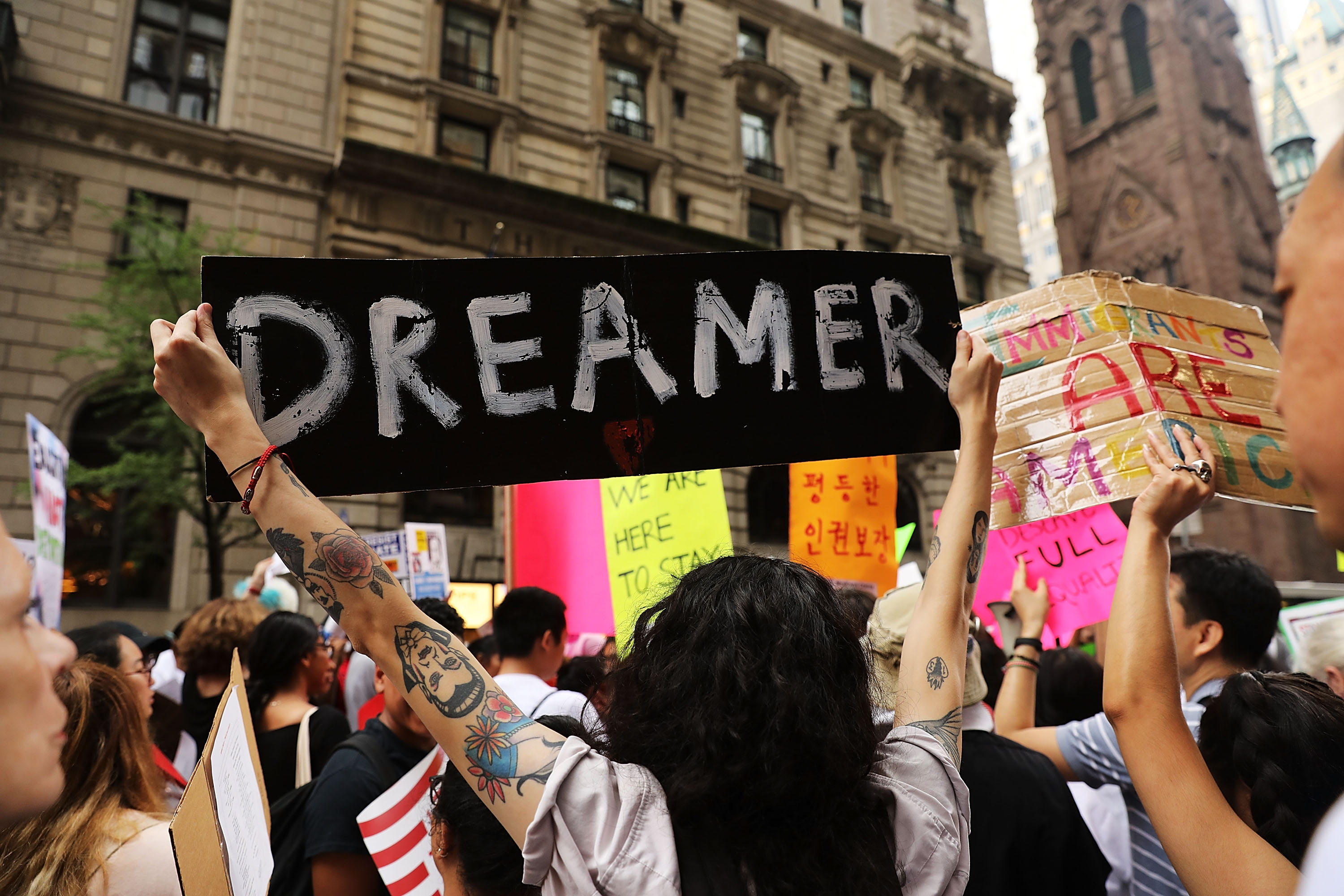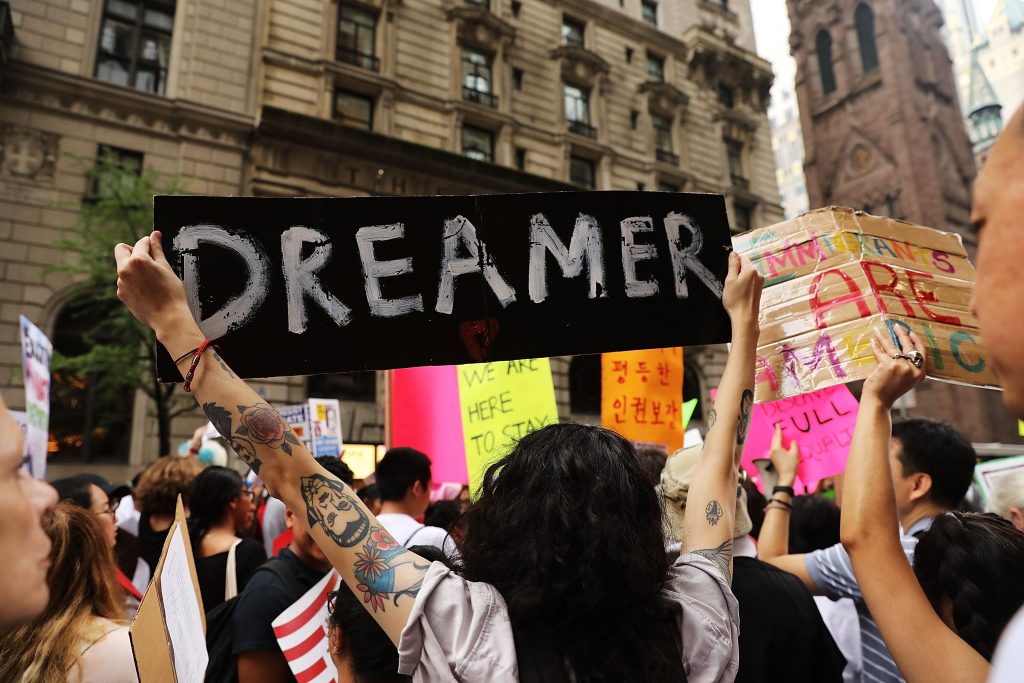When the Dream and Promise Act passed the House of Representatives, a crowd erupted into a chant: “Sí, se puede. Sí, se puede.” For many, it was an exciting moment, especially at a time when the immigrant community has been increasingly targeted by the Trump administration. President Donald Trump has attempted to use the “Dreamer” community, in particular, as a bargaining chip, hoping to offer them protection while criminalizing a larger number of undocumented immigrants.
On Twitter, Rep. Alexandria Ocasio-Cortez likened the emotional moment to a “rock concert.”
“Today, after YEARS of GOP refusal, the House finally voted on the DREAM Act under a Dem majority,” she wrote. “The moment when it passed was like a rock concert. The people’s cheers brought many, many members to tears. What a moment. This is why we fight.”
While this is a momentous occasion, the bill faces an uphill battle as it makes its way to the Senate. Here’s what you should know about the bill.
1
What is the Dream and Promise Act?
The Dream and Promise Act – also known as H.R. 6 – was introduced in March 2019 and led by Reps. Lucille Royball-Allard, Nydia Velázquez, and Yvette Clarke. If passed, the bill would provide a pathway to citizenship for some immigrants. It would give those who qualify 10 years of legal residence status. At the end of that period, they would receive permanent green cards after completing two years of high education or military service or working for three years.
2
Who would the bill protect?
The Dream and Promise Act would protect two groups: those who arrived in the US at a young age and those with temporary humanitarian protections. This would cover about 2.5 million members of the undocumented community. As Vox reports, the Dream and Promise Act is “essentially a more expansive version of the mainstay Democratic immigration bill the DREAM Act.” Where it differs is that the DREAM Act, which would have protected about 1.5 million immigrants, does not cover those with Temporary Protected Status (TPS) or Deferred Enforced Departure (DED).
But the Dream and Promise Act would give protections to more, especially those from Central American and African countries.
3
What was the vote breakdown?
The bill passed 237-187. Most of the 237 who voted in favor of the bill were Democrats, but there were seven Republicans, who voted in favor of the bill, including Reps. Mario Díaz-Balart, Brian Fitzpatrick, Don Bacon, Will Hurd, Dan Newhouse, Fred Upton, and Christopher Smith.
4
Will the bill pass the Senate?
The Dream and Promise Act likely won’t make any noise in the Senate, because of several reasons. Not only is the Senate Republican-controlled (the bill wasn’t mentioned at Senate leaders weekly news conference on Tuesday), but as Trump gets ready to run for re-election, he’ll work to appeal to his base with his anti-immigrant stance. It’s unlikely that Republican Senators will go against him.
Some of the House Republicans have already stated that the Dream and Promise Act doesn’t offer a proposal for funding the border wall. “If Democrats were serious about immigration, they would do something about the humanitarian and national security crisis along our southern border, but Speaker Pelosi has chosen to spend the House’s time on H.R. 6, an expensive, partisan show vote,” House Minority Whip Steve Scalise (R-La.) said in a statement.




